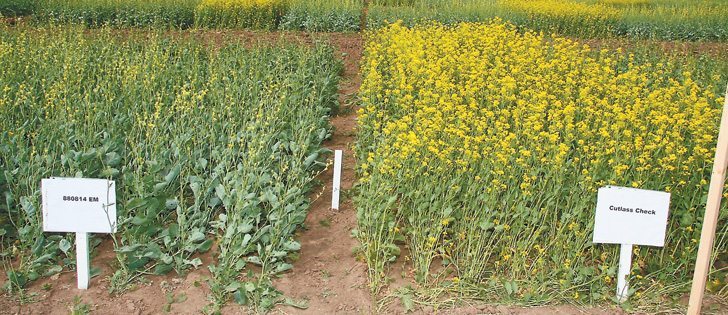Models developed | The relationship between physical activity and pain was examined
Collaborative research into juvenile arthritis is shedding new light on traditional beliefs about the disease.
Susan Tupper and Tracey Wilson-Gerwing of the University of Saskatchewan pediatrics department are combining their research to help children with arthritis manage their pain.
From their studies, other researchers will have tools to develop treatments for the disease.
The two were recently recognized at the Canadian Arthritis Network annual scientific conference in Quebec City. The U of S pediatrics department won two of the four categories for poster presentations at the conference, where more than 170 abstracts from across Canada were presented.
Read Also

Sustainable food has ‘lost all meaning’: prof
That marketing strategy is deader than a doornail, says a University of Guelph professor who specializes in consumer preferences and perceptions of agriculture and food.
While the majority of posters related to adult rheumatology, both of these projects focus on the childhood form of the disease.
About one in 1,000 children has arthritis. Studies show there’s a higher prevalence of the disease and chronic pain conditions among girls compared to boys.
Tupper tracked changes in juvenile arthritis patients’ pain throughout the day and assessed how it is affected by different levels of physical activity.
Wilson-Gerwing has developed the first-ever model for the study of juvenile arthritis and pediatric inflammatory pain caused by arthritis.
Tupper won the clinical health services category for her study examining how pain changes during the day for juvenile arthritis patients.
Her research also looked for the relationship between pain and physical activity as well as pain and mood.
“Generally for boys and girls, pain tends to be worse in the morning. It drops down in the afternoon for both. For girls, it goes back up in the evening but for boys, it keeps on dropping throughout the day,” she said.
Tupper collaborated with researchers in the department of computer science at the university to develop an electronic pain diary for the IPod Touch.
A group of 32 children eight to 17 years of age and suffering with arthritis or chronic pain were enrolled from rural and urban Saskatchewan.
Seven times a day over four days, an alarm would sound reminding the children to answer a series of questions. The children’s reports of their pain and mood were captured on the IPod.
Participants’ physical activity was also monitored by motion sensors. The study showed pain increased with too much or too little activity.
That relationship between activity and pain was an important area to study, Tupper says.
“I looked at how sedentary they were. If they were sitting around quite a bit, they tended to have more pain. If they were vigorously active, they also had more pain. When they were lightly active, they tended to feel a little bit better,” she said.
Tupper said children with arthritis and chronic pain are getting even less activity than the normal population.
“They tend to be an ex-tremely sedentary group. We want to recommend physical activity for them but it’s painful for them. The more physically active they are over the long run, the healthier they are, the better bone health they have, the stronger their muscles are and they have less pain when they are more physically active.”
The results from her study may help youth cope with arthritis by allowing them to plan activities to coincide with times when their pain should be lower.
Wilson-Gerwing won the inflammation and immunology category. Her study demonstrates that juveniles and adults respond differently to arthritis.
“Until now, basic science research into arthritis interventions have treated children and adults with arthritis the same,” she said.
“Children are still growing and active. Adults have a different set of issues surrounding their arthritis and they tend to be a little bit less active,” she says.
By inducing arthritis in rodents, Wilson-Gerwing found differences by age groups and in how much bone is affected and how much pain and swelling they have.
“It was quite shocking to see the differences between what happens in an adult (animal) and what happened in these younger animals,” she said.
Her work provides a model for testing the effectiveness of arthritis treatments in juveniles. It has implications for how juvenile arthritis is treated and how young patients will manage their pain.
- Pain, swelling, tenderness and stiffness of joints, causing limited range of motion
- Joint shortening, which results from holding a painful joint in a flexed position for an extended period
- Damage to joint cartilage and bone leading to joint deformity and impaired use
- Altered growth of bone and joints, which can lead to a short stature
- The cause of most forms of juvenile arthritis is unknown, but it is not contagious and there is no evidence that foods, toxins, allergies or vitamin deficiencies play a role.
- There is no single test to diagnose juvenile arthritis. A diagnosis is based on a complete medical history and carefulmedical examination. Evaluation by a pediatric rheumatologist is often required.
- Blood and urine tests are often needed to assist in diagnosis.















